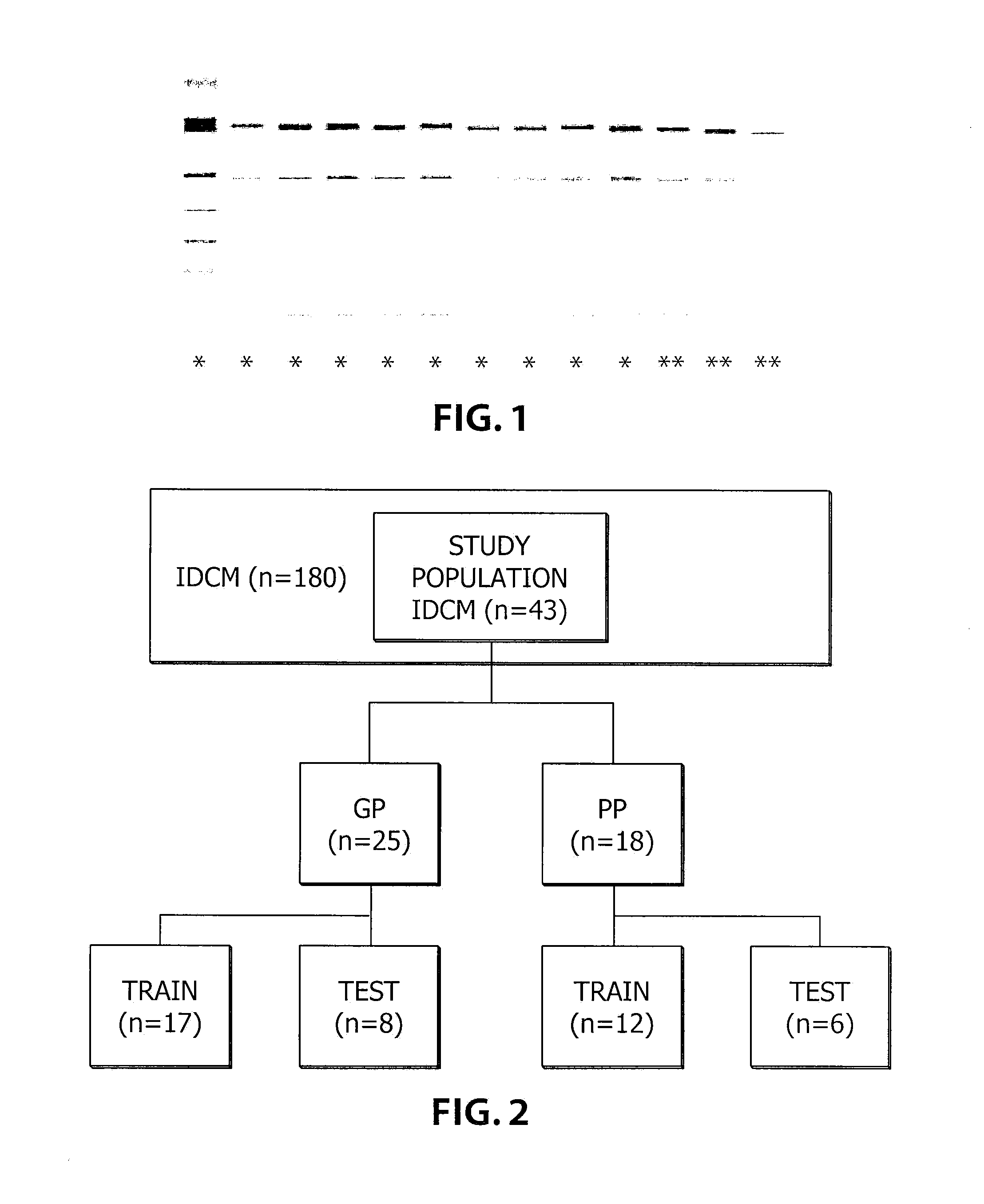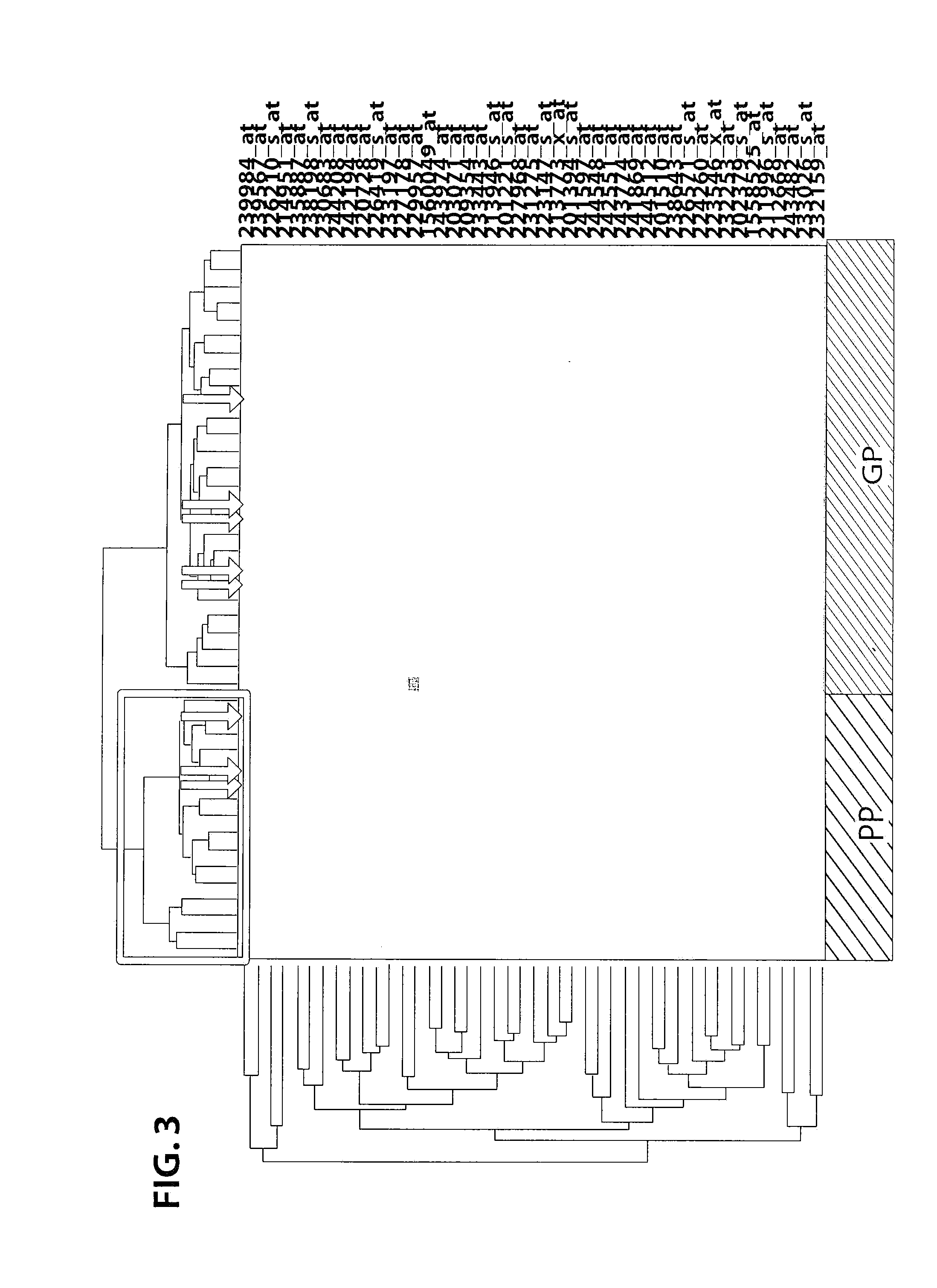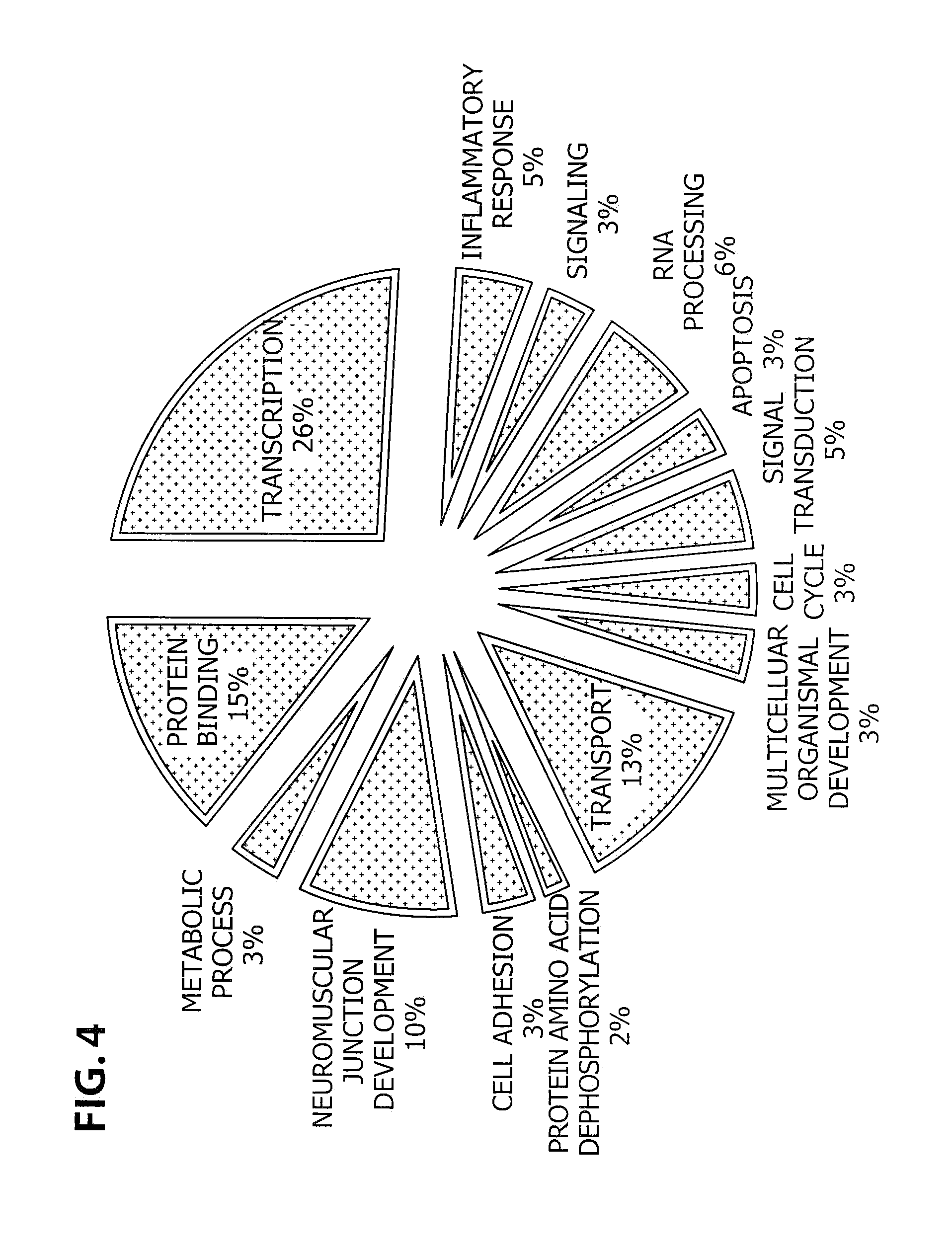Transcriptomic biomarkers for individual risk assessment in new onset heart failure
a transcriptional biomarker and individual risk assessment technology, applied in the field of transcriptional biomarkers of heart disease, can solve the problems of limited accuracy of prediction tools based on standard criteria, and achieve the effect of accurate prognostic assessment and substantial financial savings
- Summary
- Abstract
- Description
- Claims
- Application Information
AI Technical Summary
Benefits of technology
Problems solved by technology
Method used
Image
Examples
example 1
Transcriptomic Biomarkers for Individual Risk Assessment in New Onset Heart Failure
[0183]Accurate risk assessment and prediction of prognosis at first presentation are crucial for appropriate allocation of therapy, monitoring and patient management. In this study, a transcriptomic based biomarker (TBB) is presented which has been derived from a single endomyocardial biopsy (EMB) and which predicts the long term clinical outcome of patients with idiopathic dilated cardiomyopathy (IDCM) with very high accuracy.
[0184]Materials and Methods
[0185]Abbreviations:
[0186]NYHA, New York Heart Association classification; LV EF, left ventricular ejection fraction, LVIDD, left ventricular internal diastolic dimension; PAP, pulmonary artery pressure; PCWP, pulmonary capillary wedge pressure.
[0187]Patients:
[0188]EMBs were collected from patients that were referred to Johns Hopkins Hospital between 1997 and 2006 for evaluation of cardiomyopathy (n=35012). A clinical data base of patient outcome was m...
example 2
Transcriptomic Biomarker for Predicting Clinical Outcome and Prognosis in Heart Failure Using a Transcriptomic Biomarker
[0211]To identify this biomarker (gene signature) heart samples were collected from patients undergoing heart biopsy early in their clinical course. Following this the samples were stored in a biorepository for 5-10 years during which time the outcome of patients were determined.
[0212]Endomyocardial biopsy samples from patients with idiopathic cardiomyopathy have been collected at the Johns Hopkins Hospital between 1997-2004 and stored in liquid nitrogen. Biopsy samples from patients with idiopathic cardiomyopathy were chosen from this biorepsitory—18 patients with good prognosis and 12 patients with bad prognosis. Bad prognosis was defined as occurrence of death or an intervention, namely left-ventricular assist device placement or cardiac transplant, in the first 2 years after diagnosis, while good prognosis was defined as event free survival for greater than 5 y...
PUM
| Property | Measurement | Unit |
|---|---|---|
| temperature | aaaaa | aaaaa |
| temperature | aaaaa | aaaaa |
| temperature | aaaaa | aaaaa |
Abstract
Description
Claims
Application Information
 Login to View More
Login to View More - R&D
- Intellectual Property
- Life Sciences
- Materials
- Tech Scout
- Unparalleled Data Quality
- Higher Quality Content
- 60% Fewer Hallucinations
Browse by: Latest US Patents, China's latest patents, Technical Efficacy Thesaurus, Application Domain, Technology Topic, Popular Technical Reports.
© 2025 PatSnap. All rights reserved.Legal|Privacy policy|Modern Slavery Act Transparency Statement|Sitemap|About US| Contact US: help@patsnap.com



